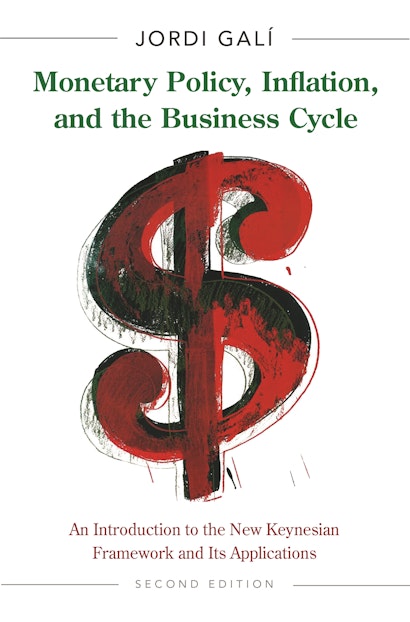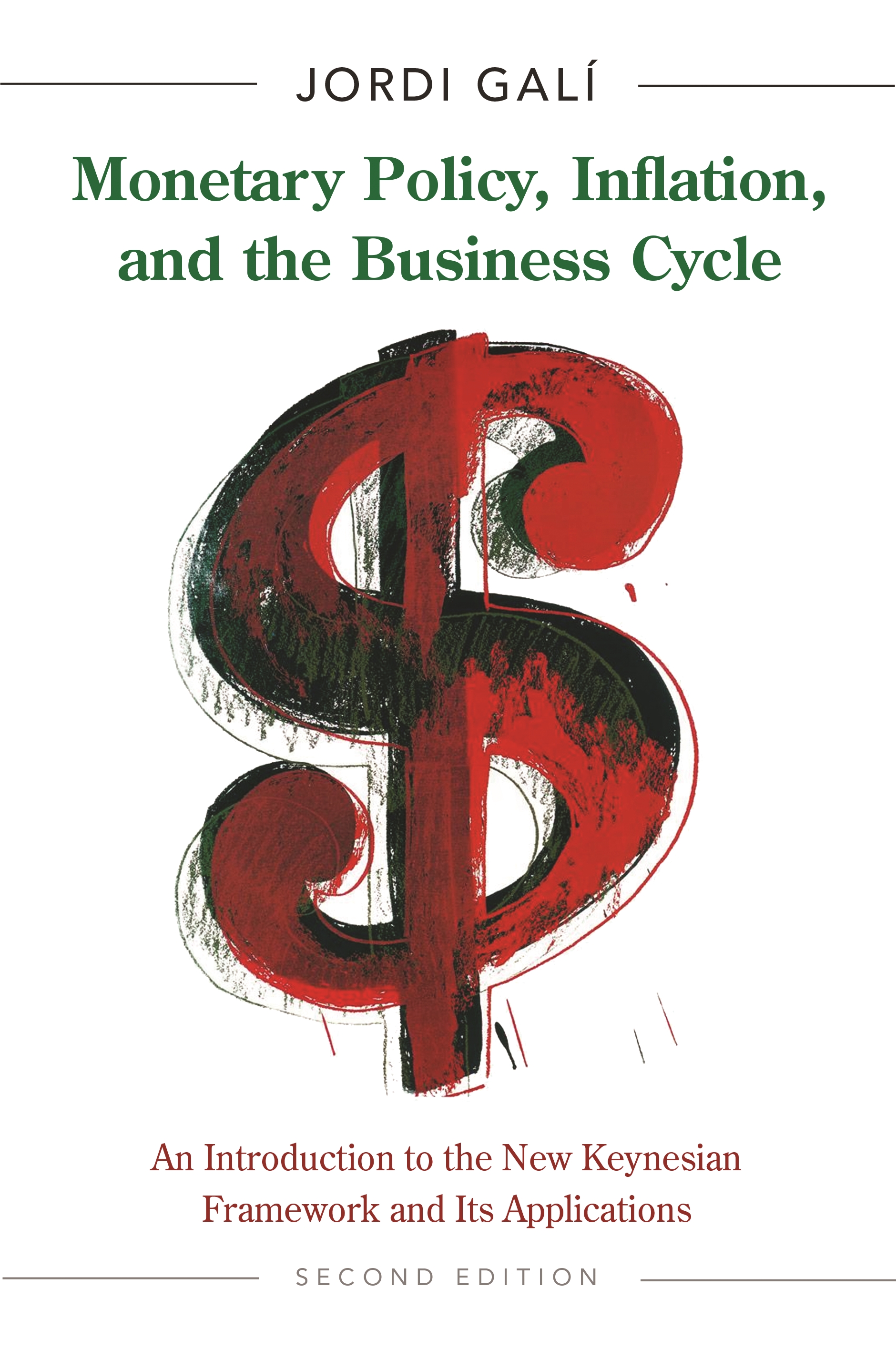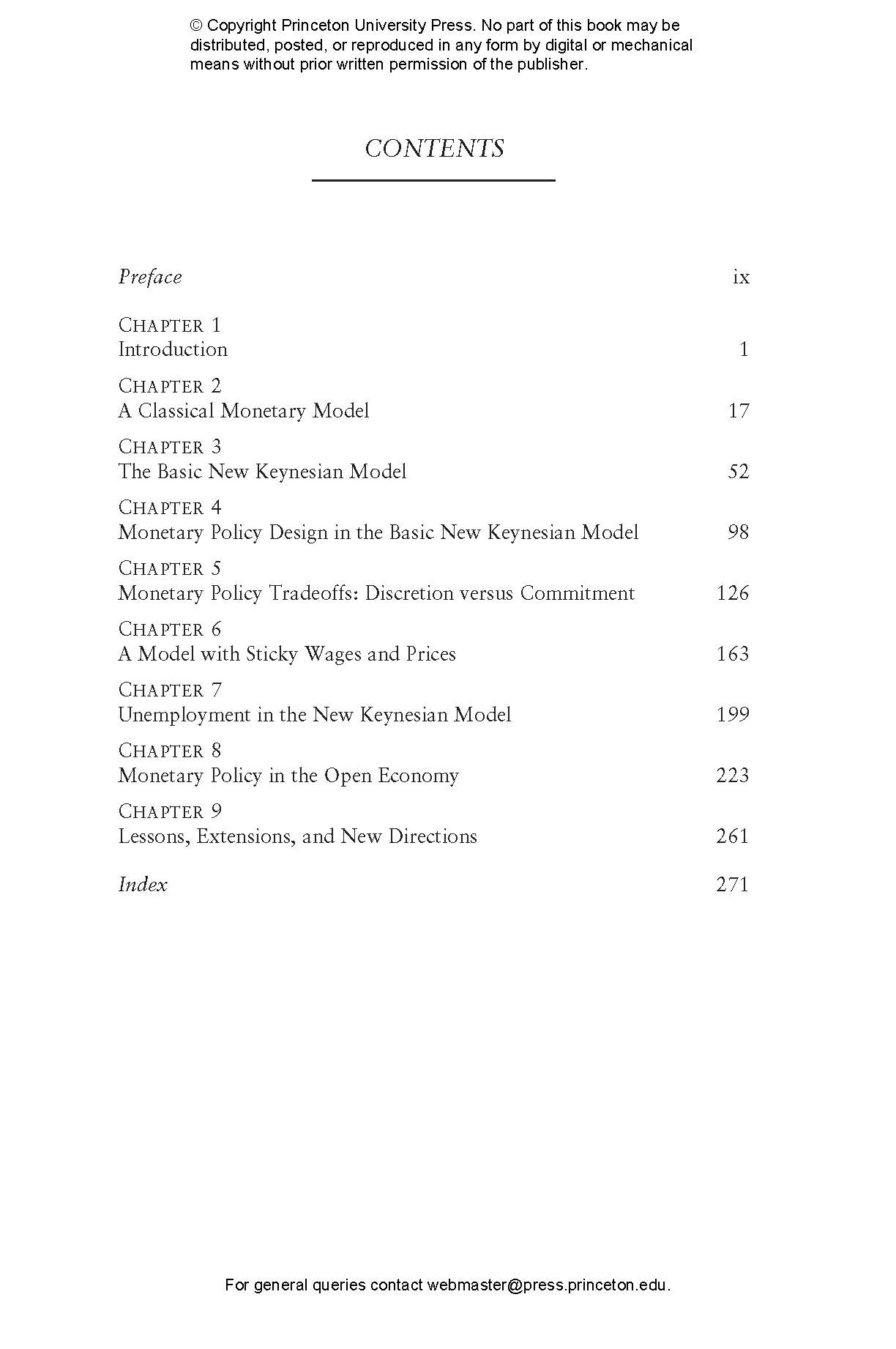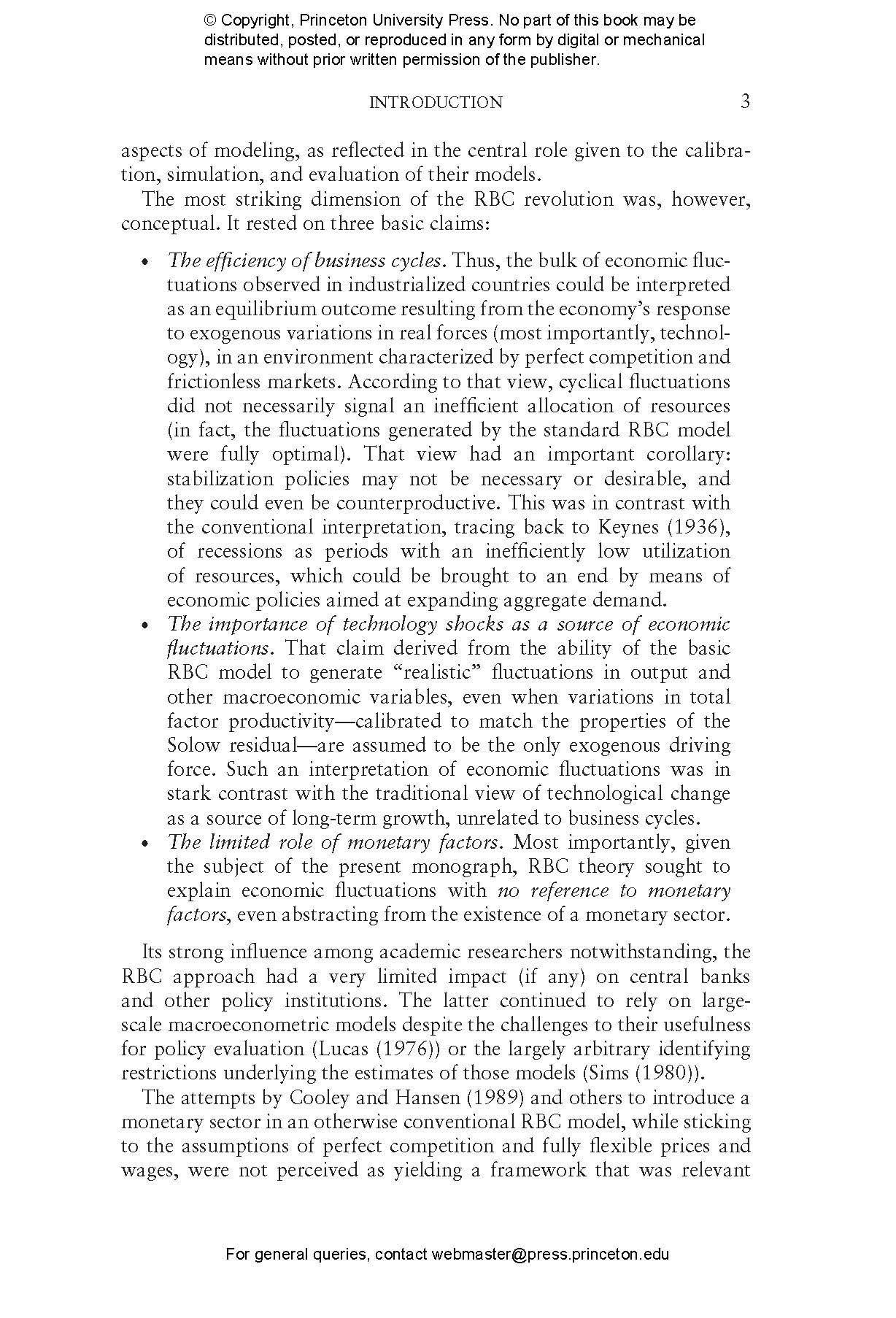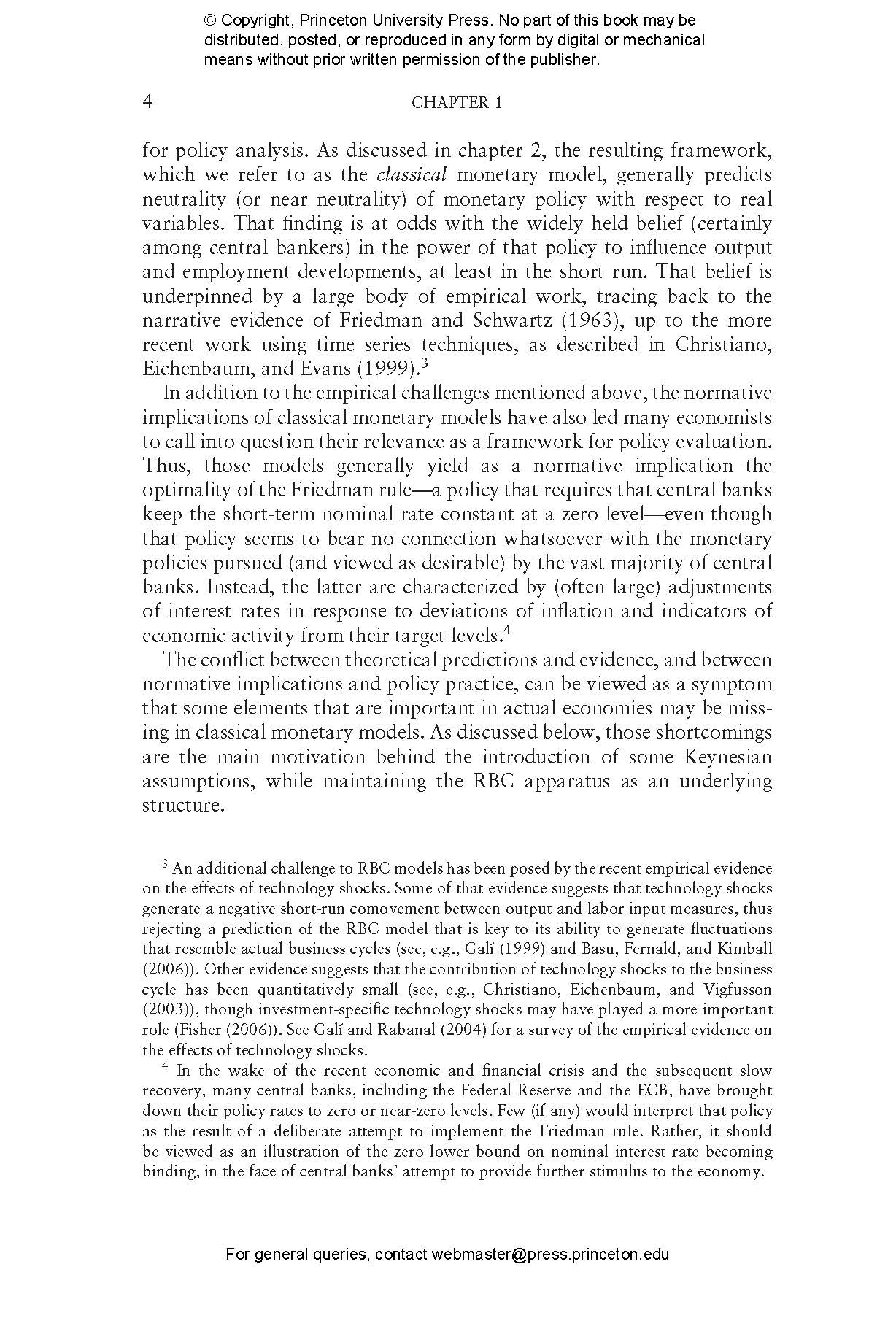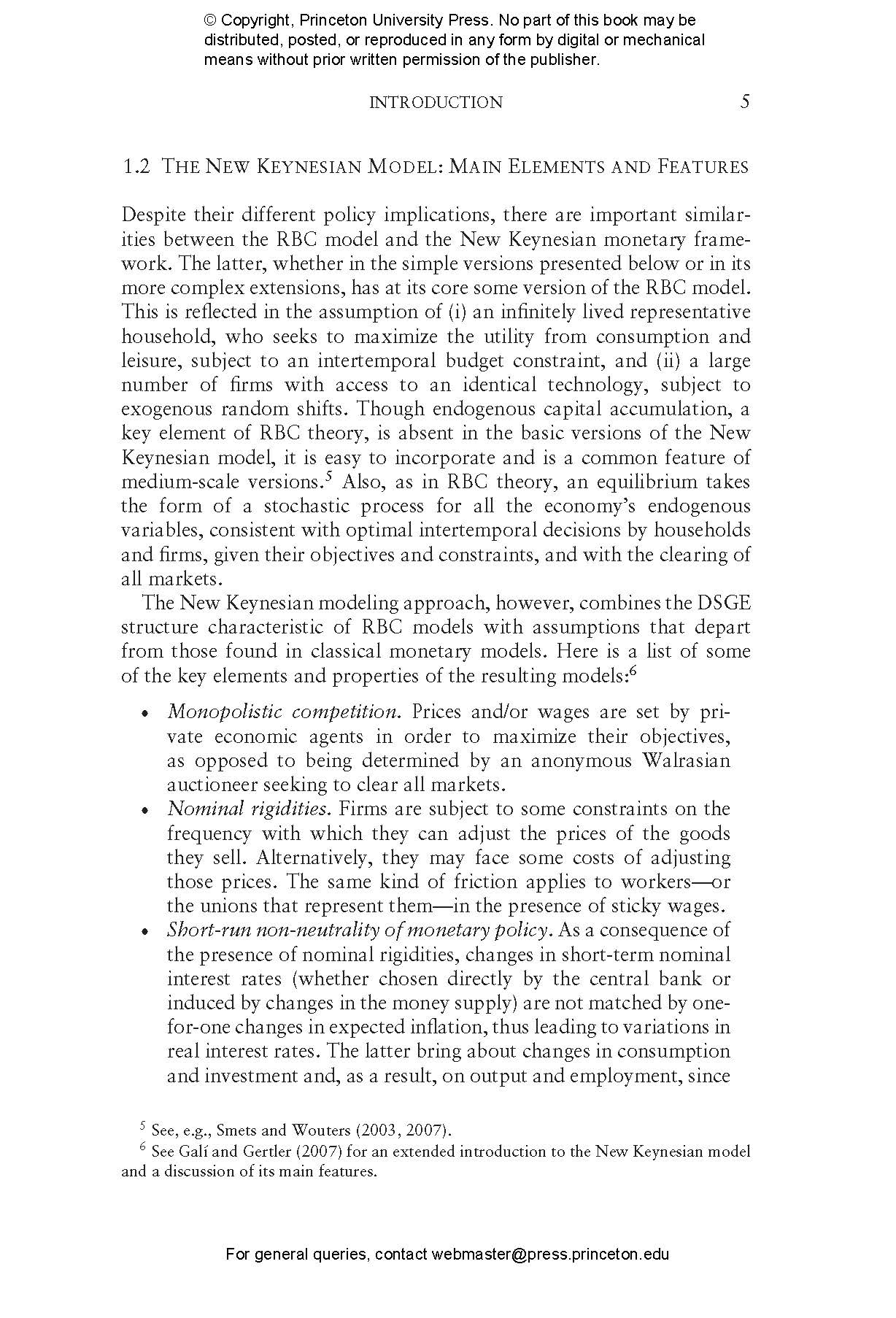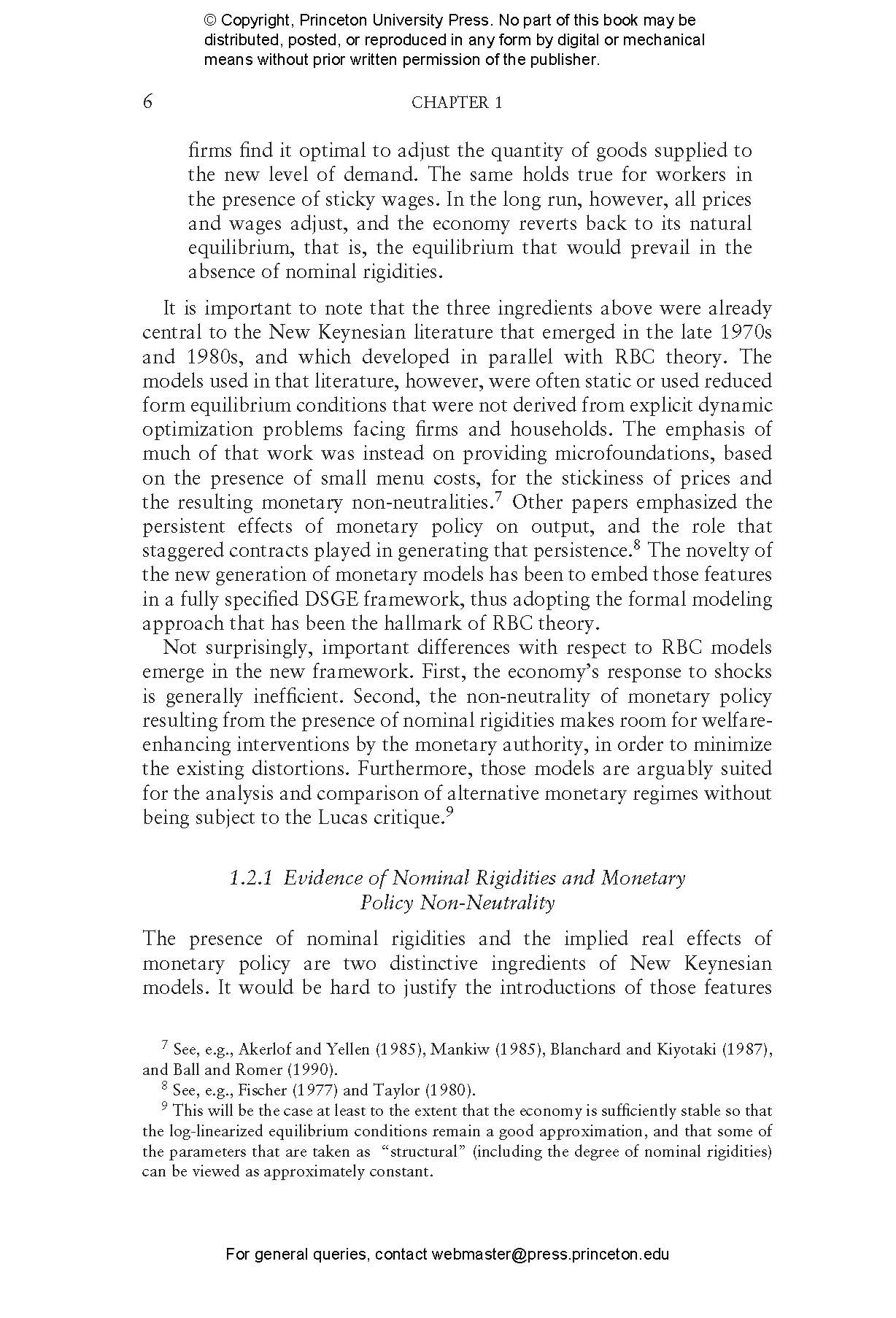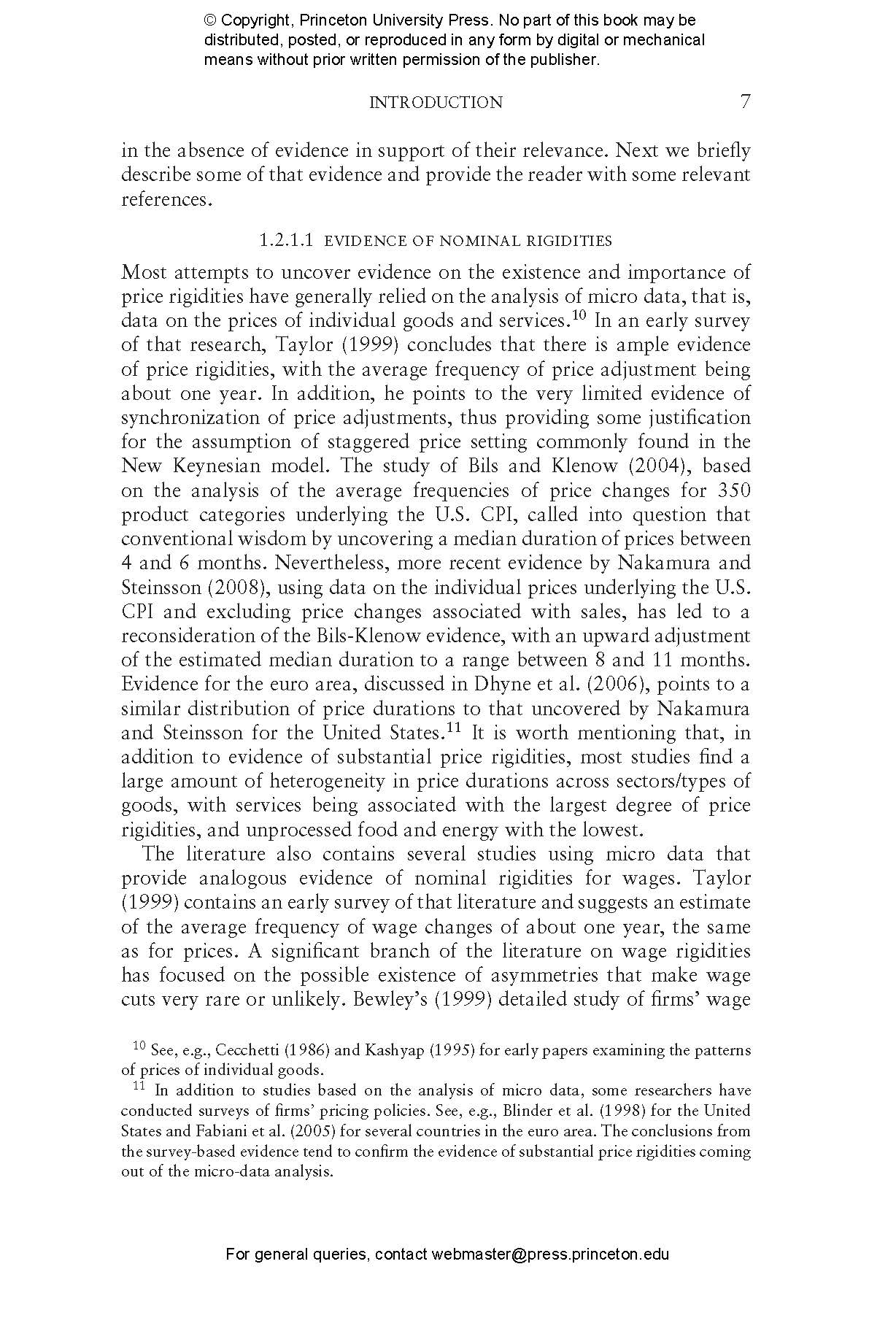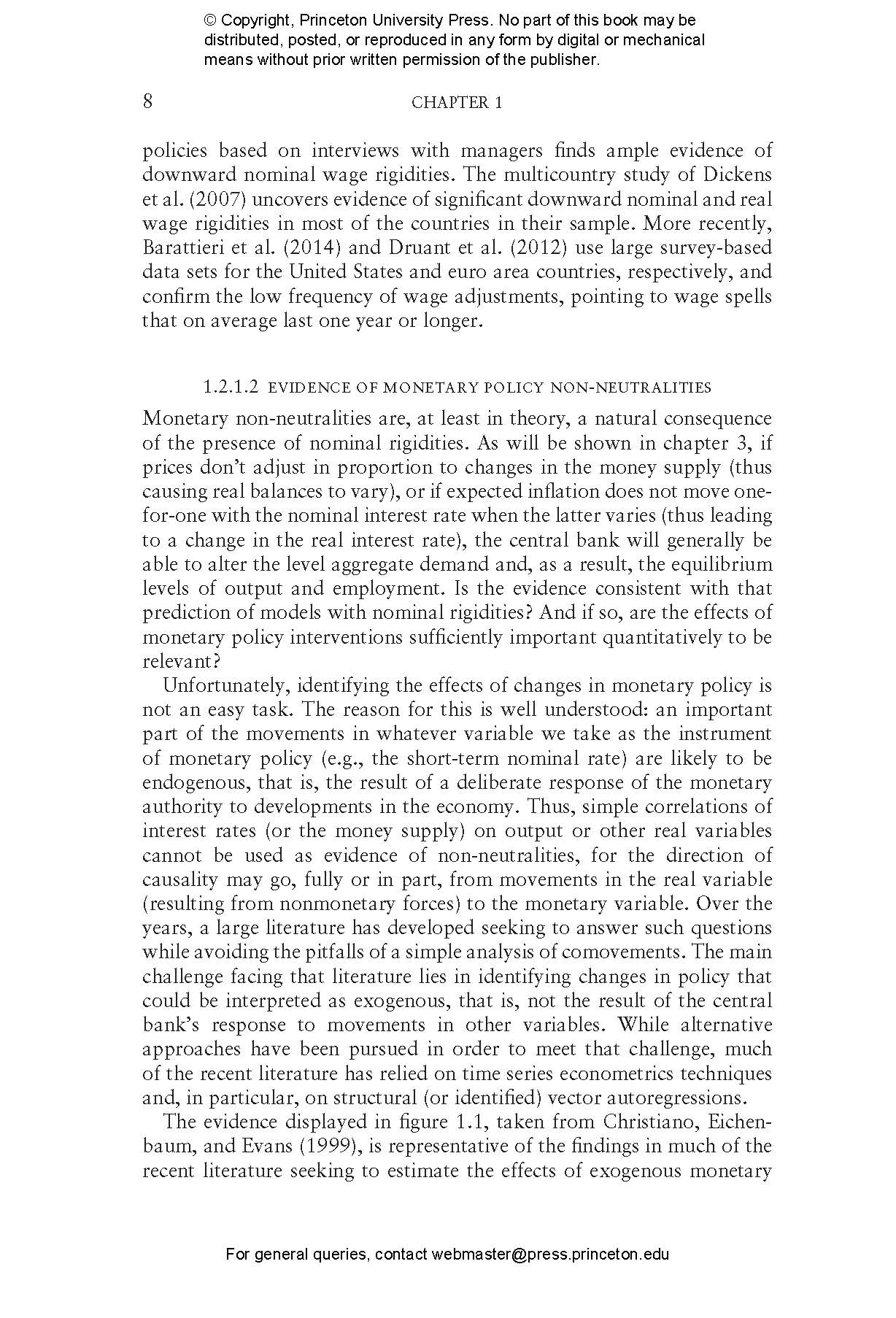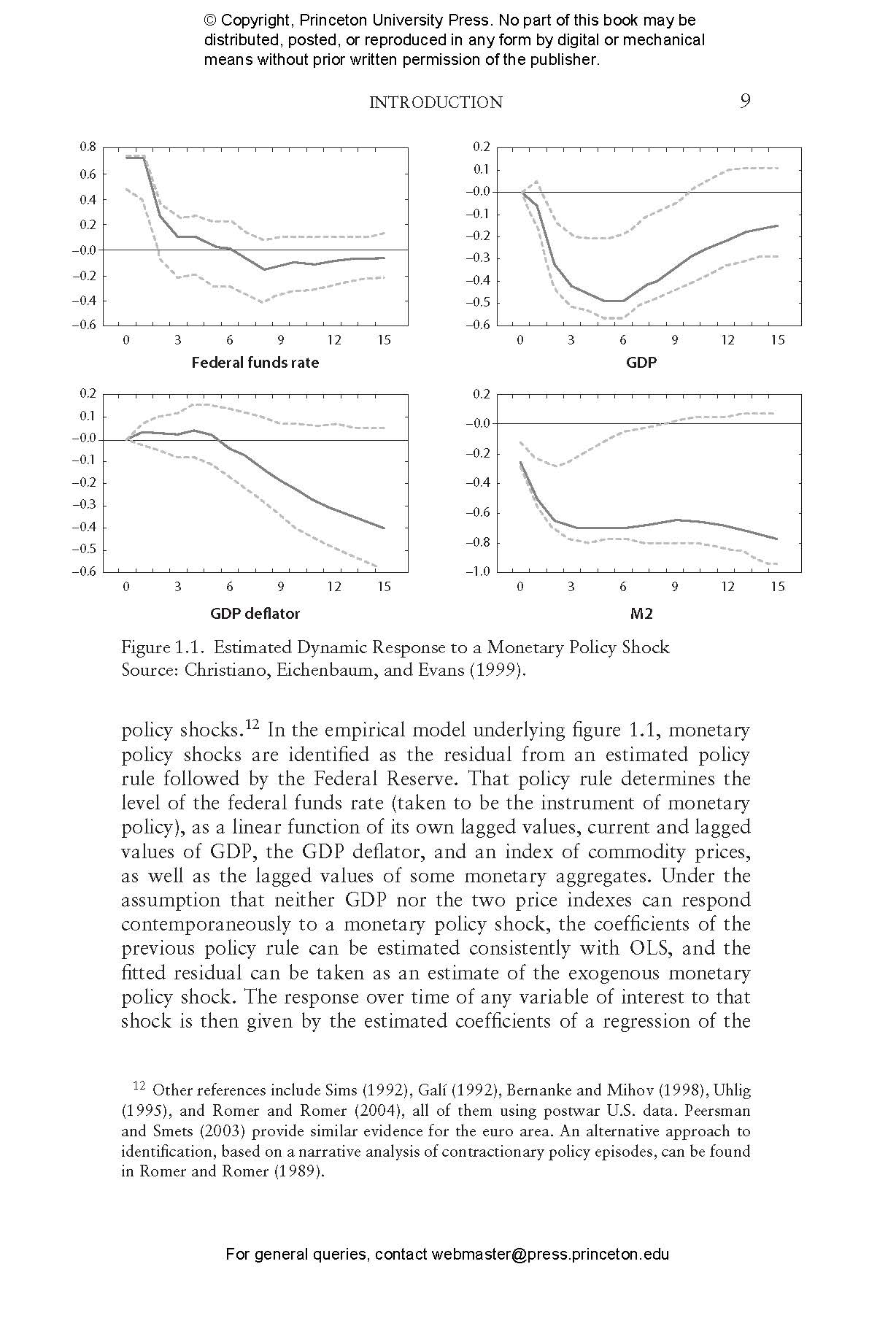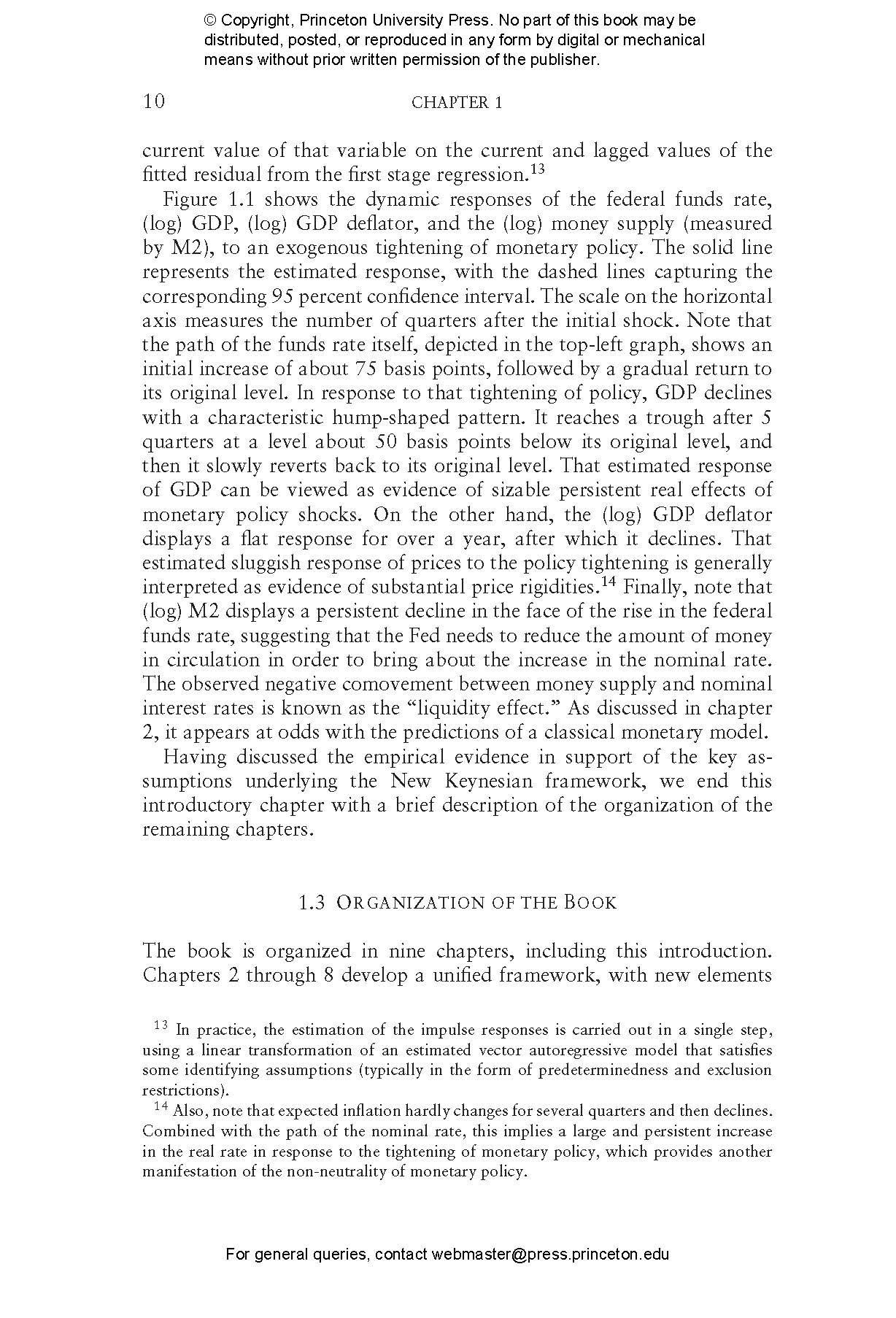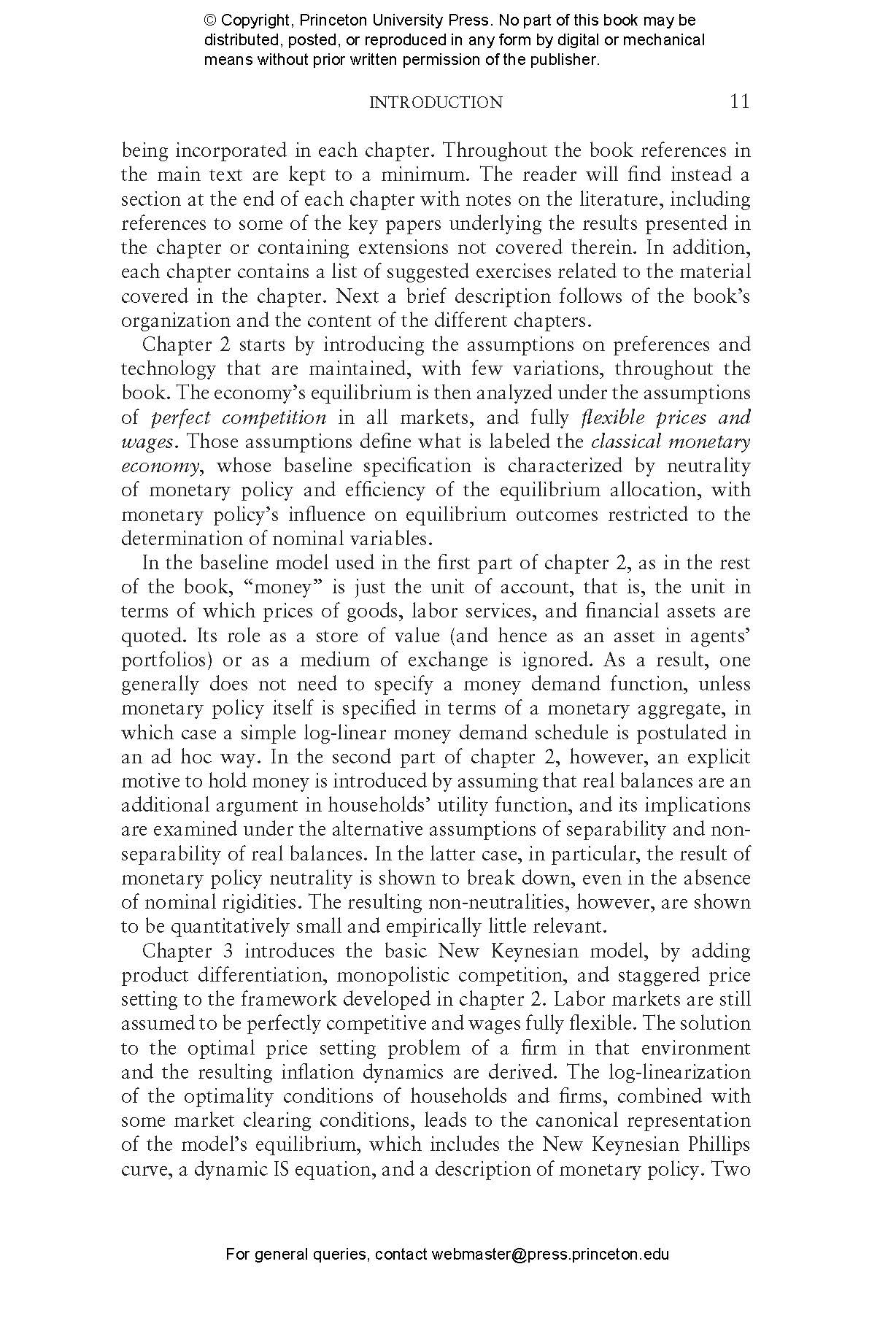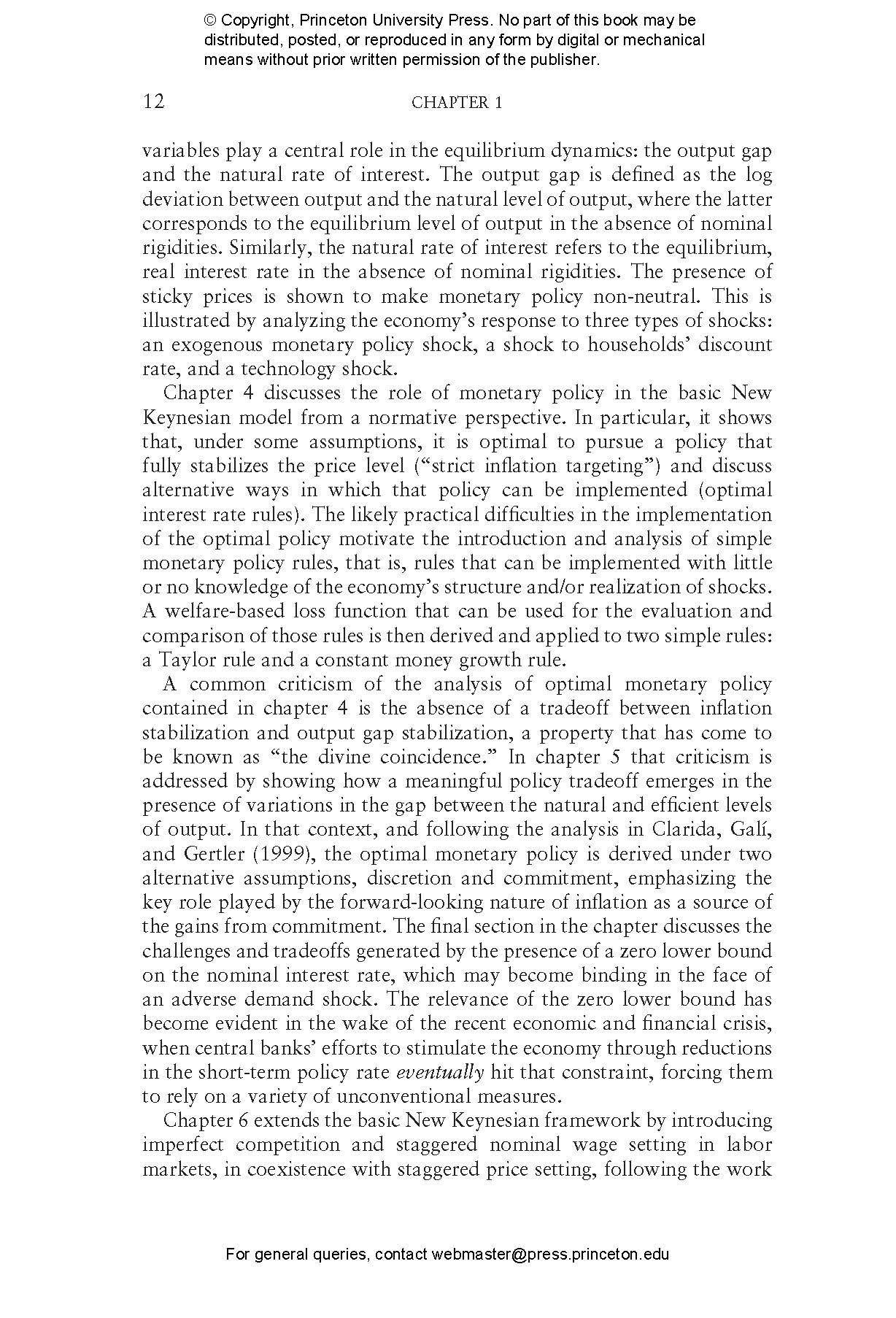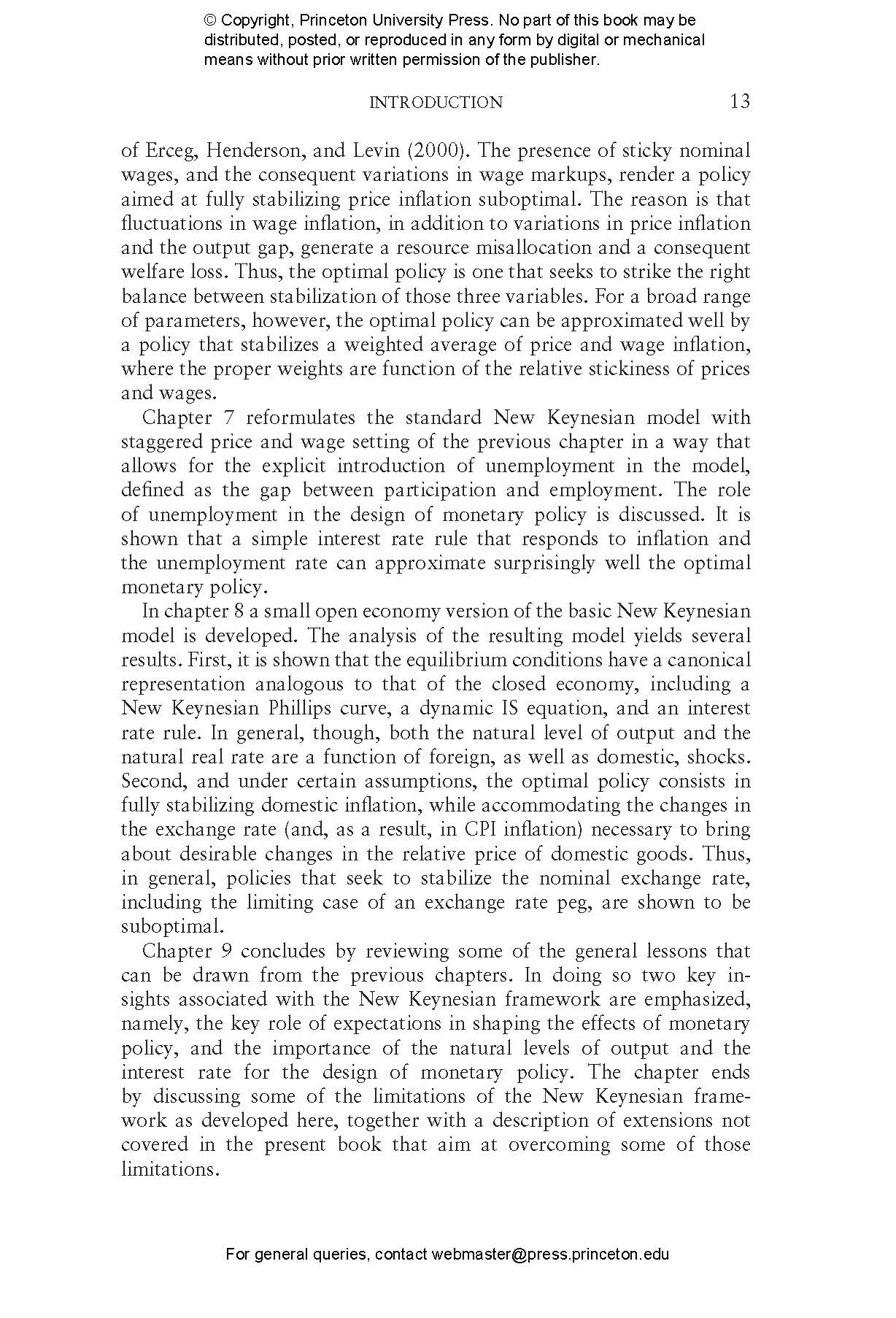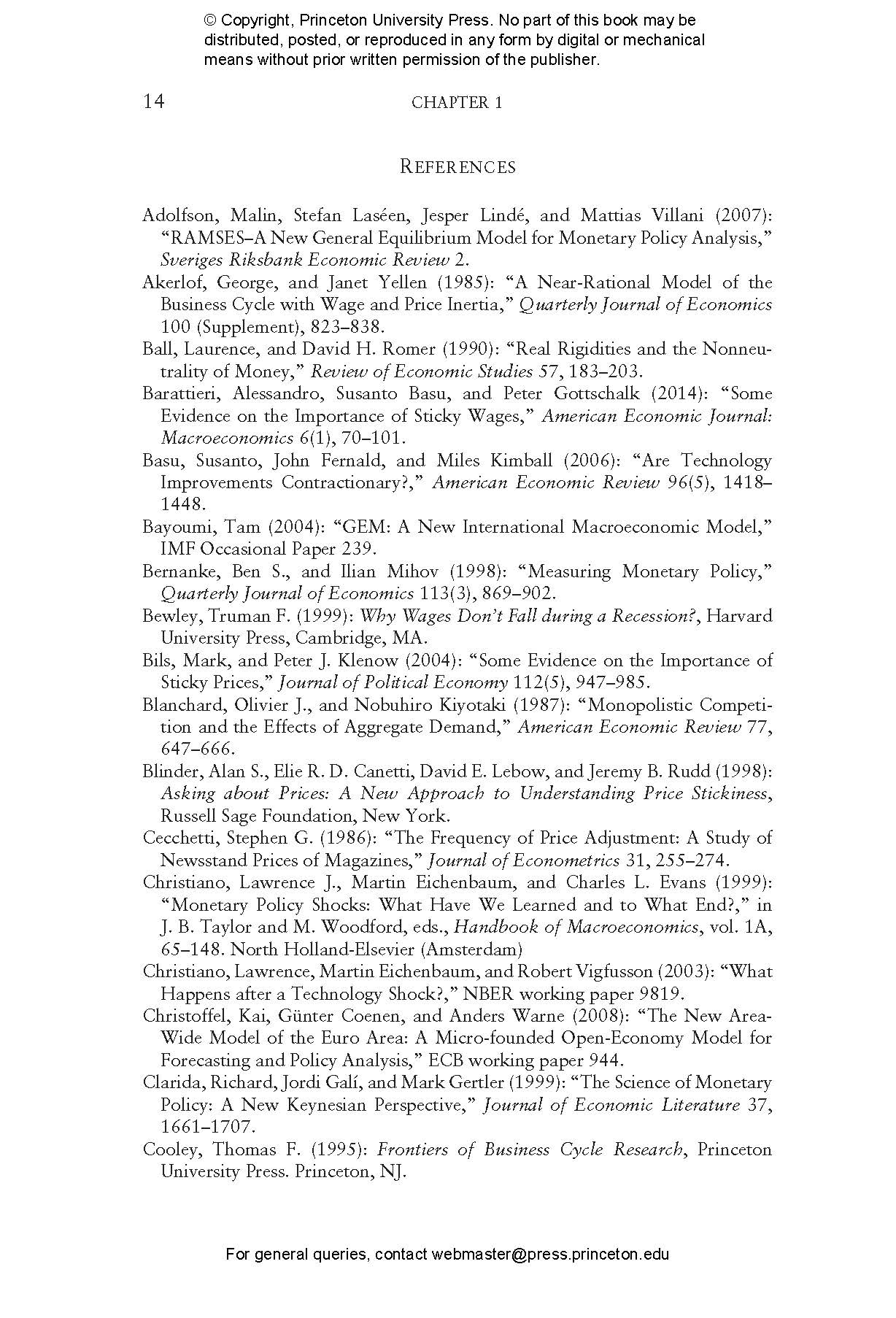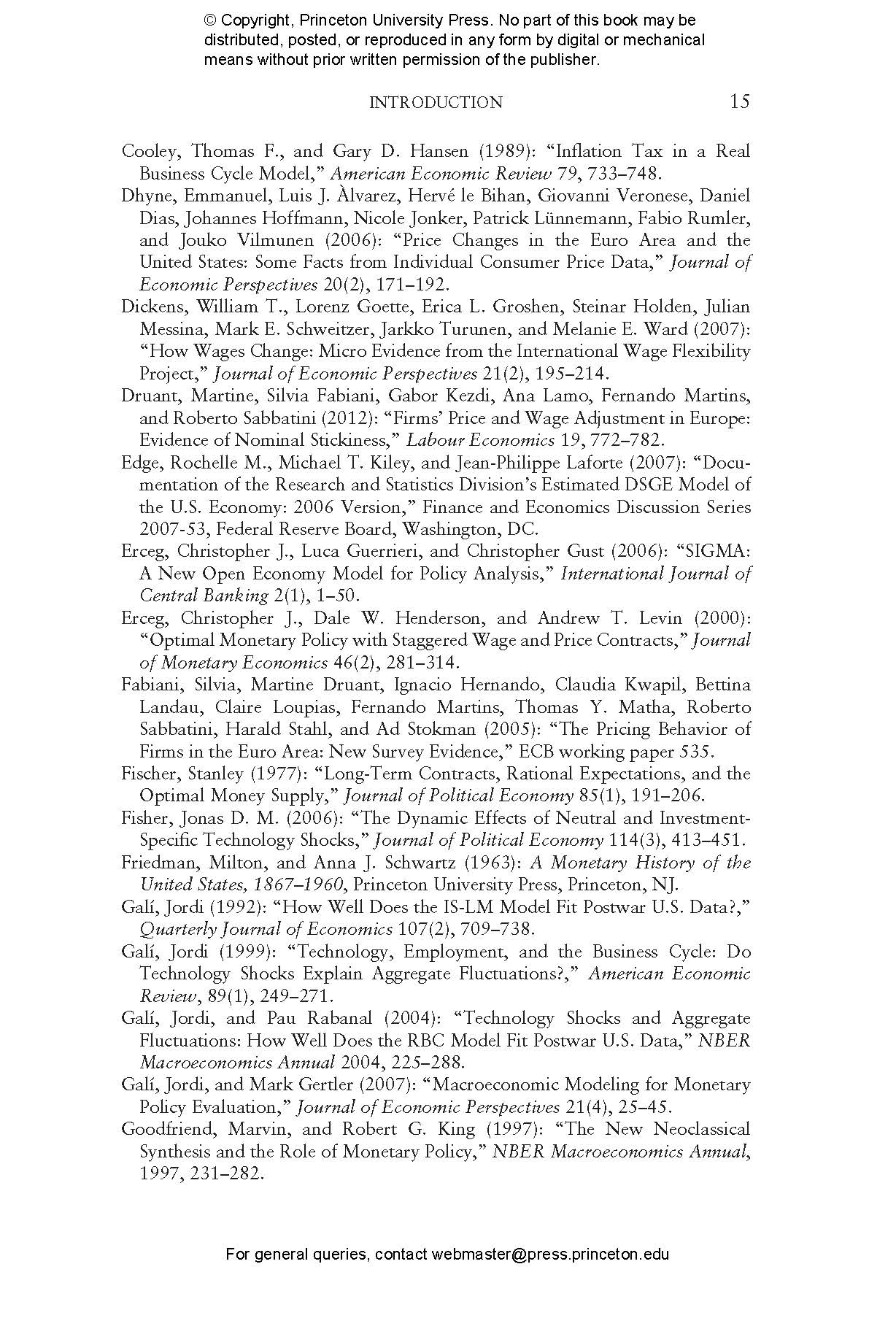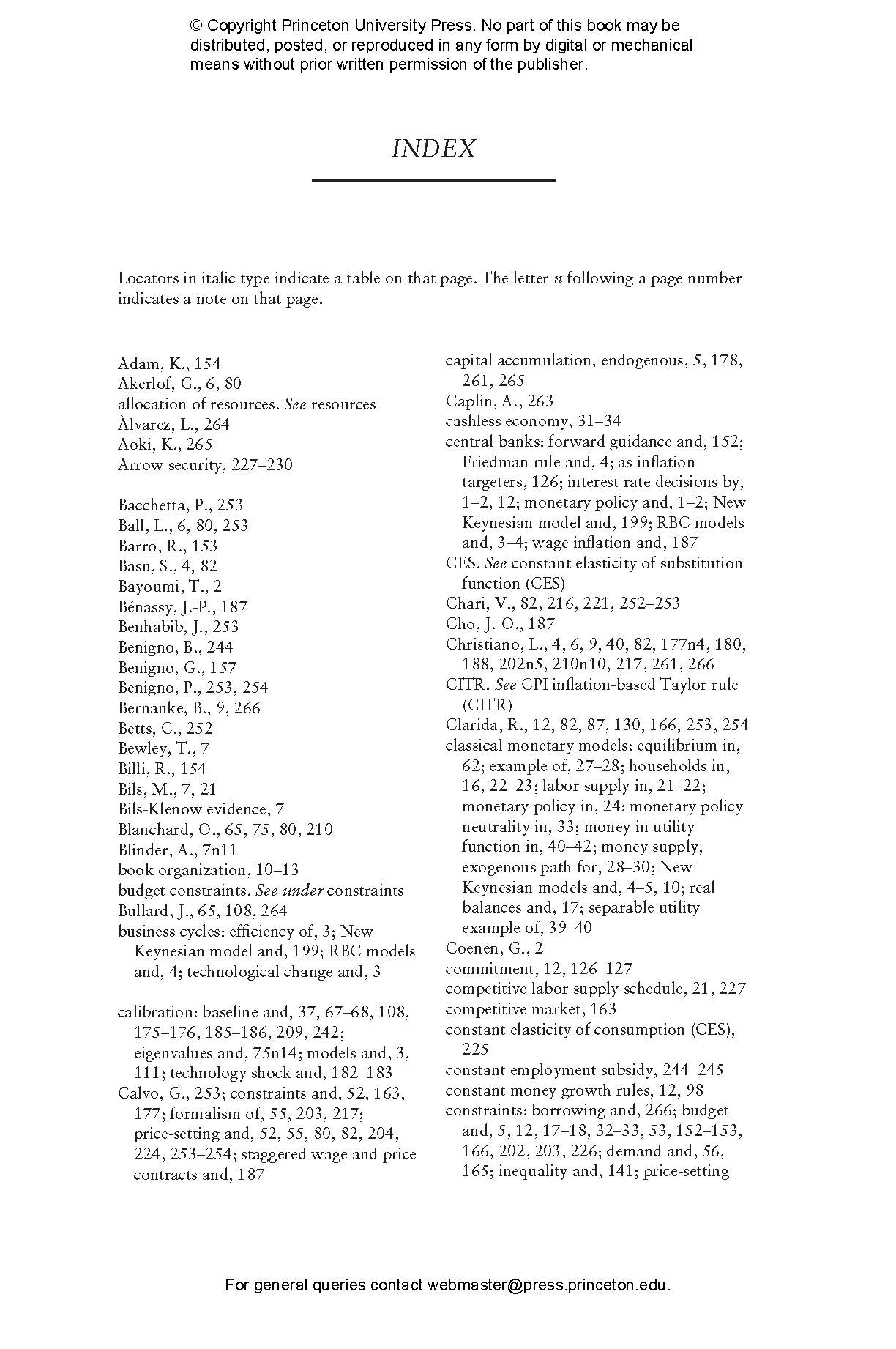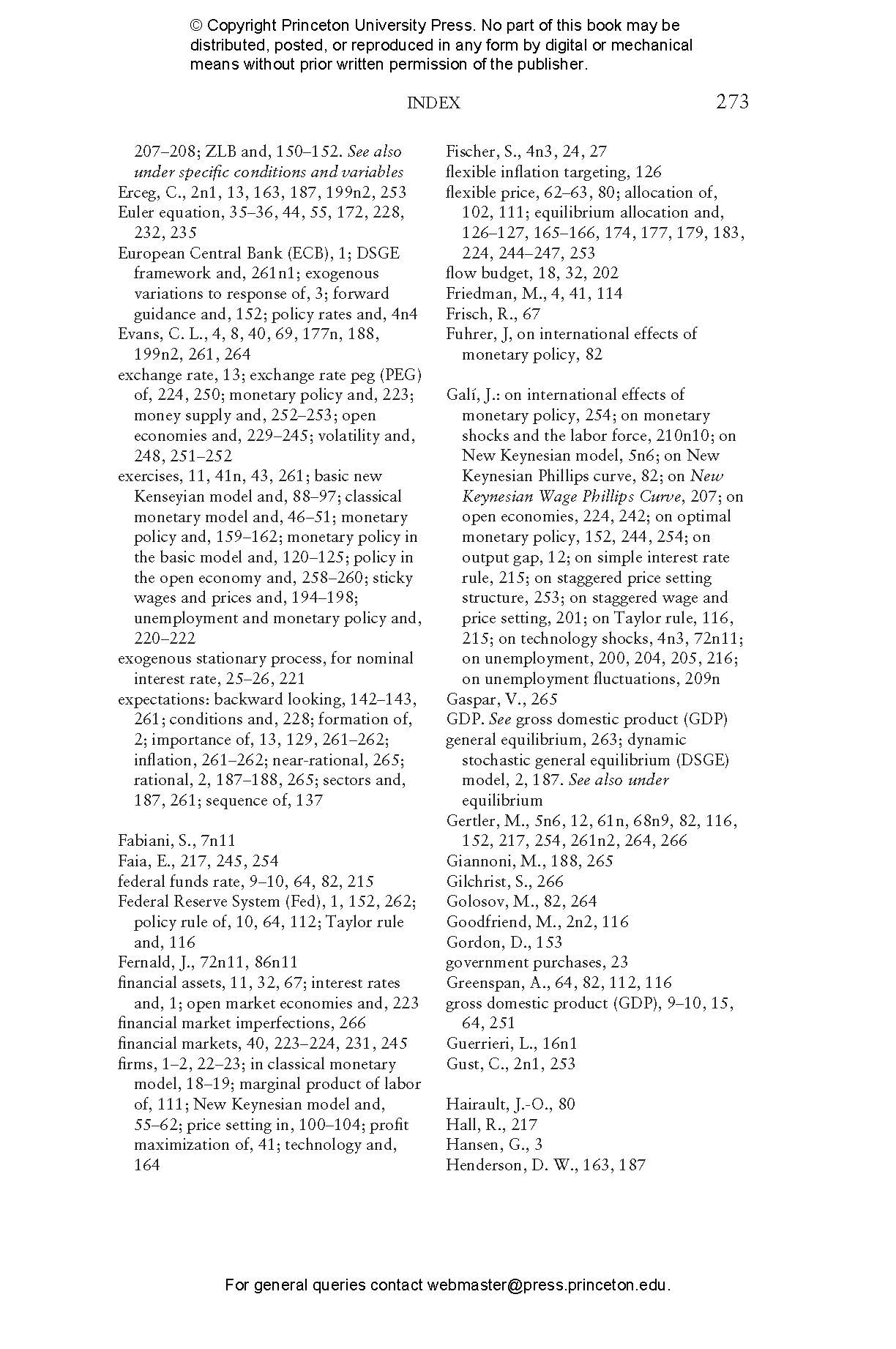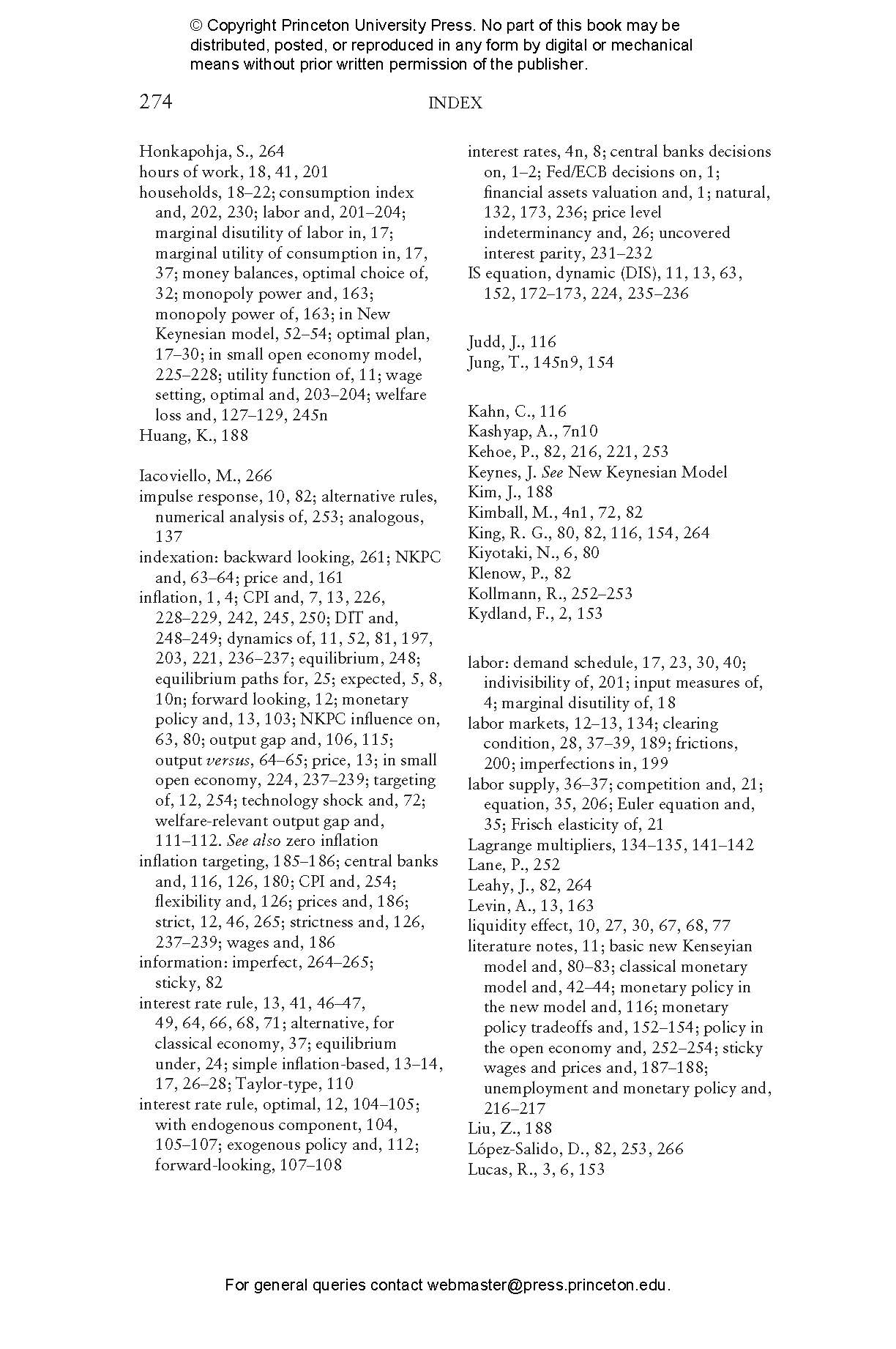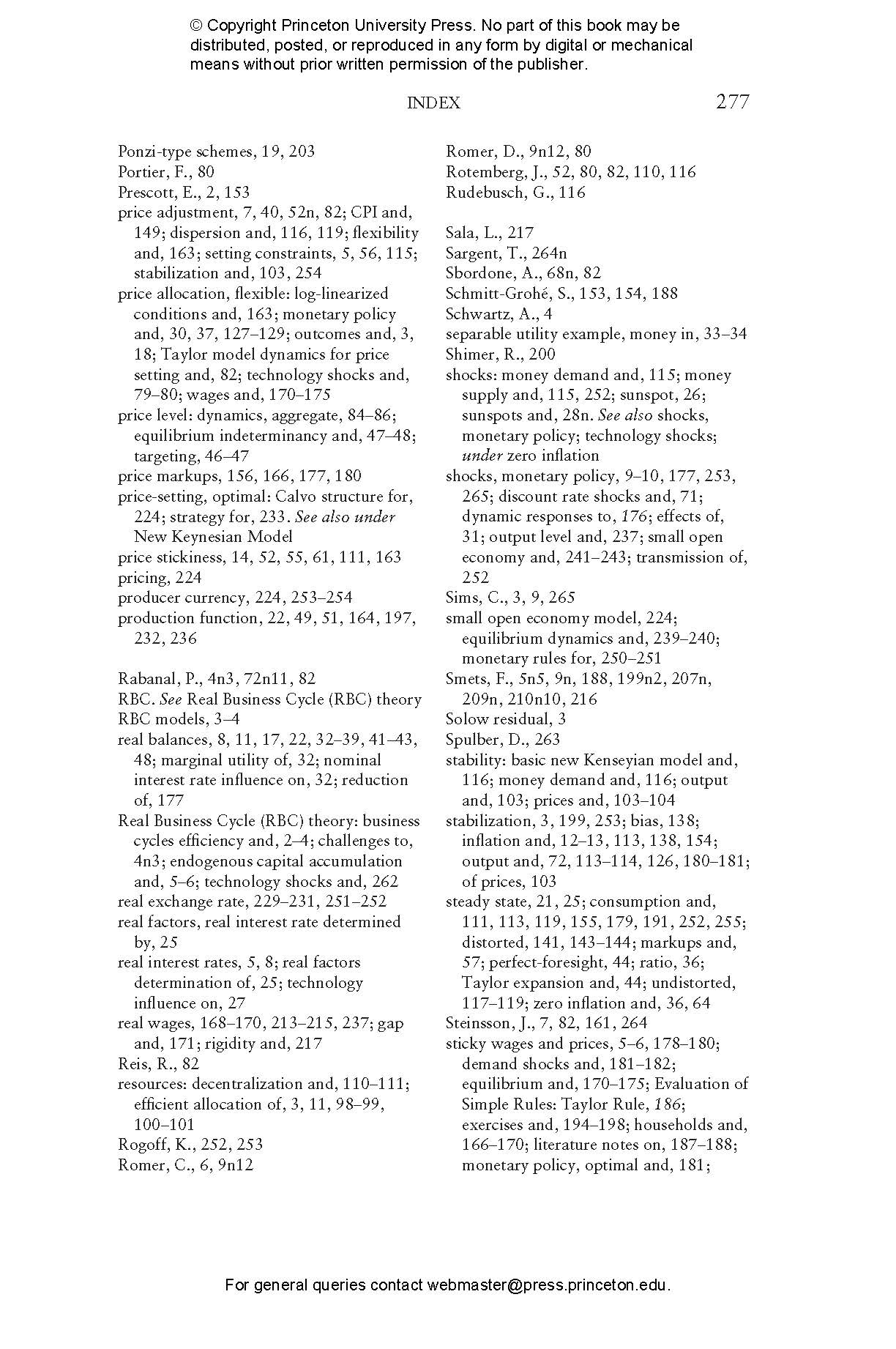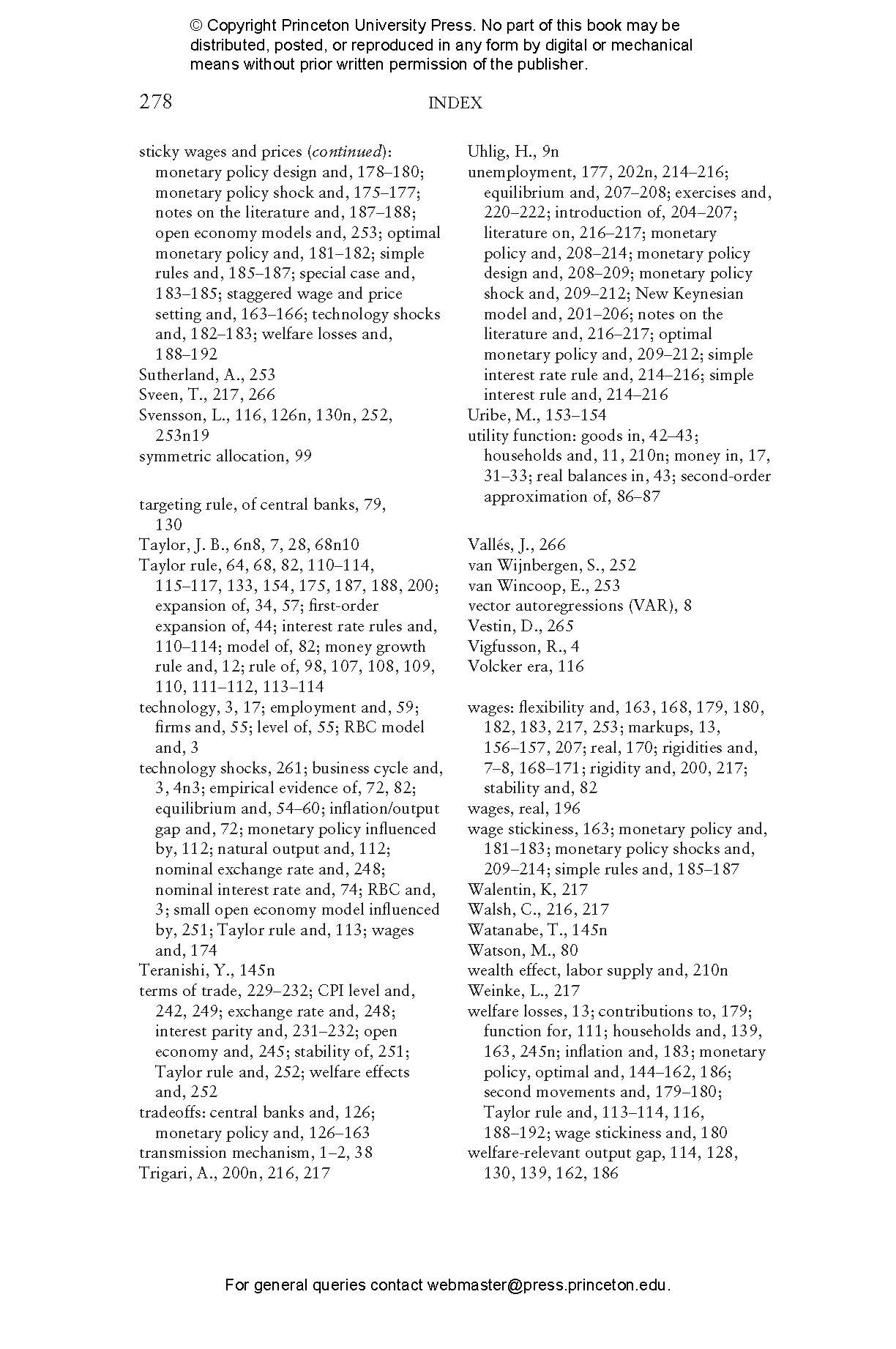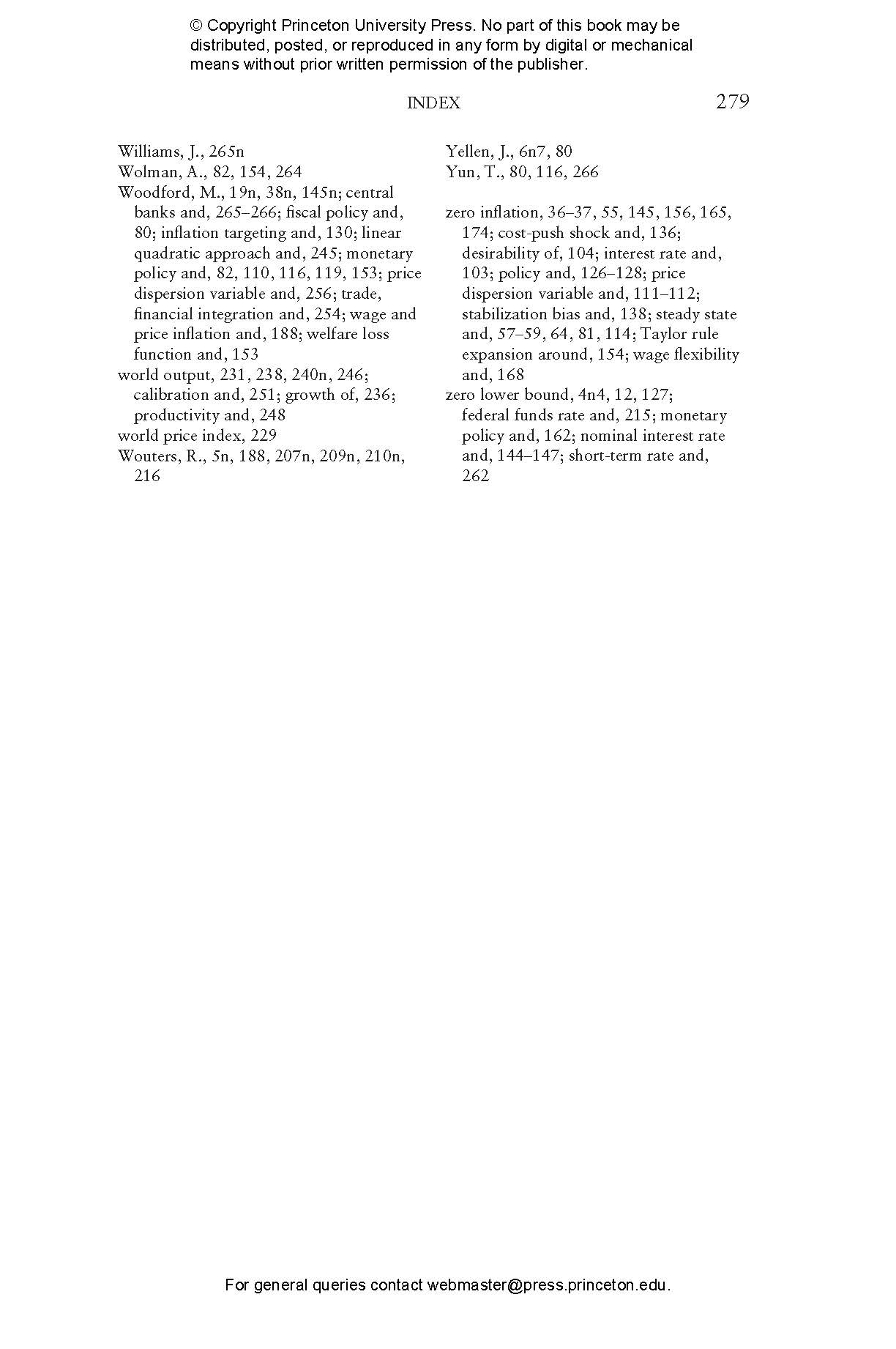This revised second edition of Monetary Policy, Inflation, and the Business Cycle provides a rigorous graduate-level introduction to the New Keynesian framework and its applications to monetary policy. The New Keynesian framework is the workhorse for the analysis of monetary policy and its implications for inflation, economic fluctuations, and welfare. A backbone of the new generation of medium-scale models under development at major central banks and international policy institutions, the framework provides the theoretical underpinnings for the price stability–oriented strategies adopted by most central banks in the industrialized world.
Using a canonical version of the New Keynesian model as a reference, Jordi Galí explores various issues pertaining to monetary policy’s design, including optimal monetary policy and the desirability of simple policy rules. He analyzes several extensions of the baseline model, allowing for cost-push shocks, nominal wage rigidities, and open economy factors. In each case, the effects on monetary policy are addressed, with emphasis on the desirability of inflation-targeting policies. New material includes the zero lower bound on nominal interest rates and an analysis of unemployment’s significance for monetary policy.
- The most up-to-date introduction to the New Keynesian framework available
- A single benchmark model used throughout
- New materials and exercises included
- An ideal resource for graduate students, researchers, and market analysts
"Praise for the previous edition: "A state-of-the-art treatment of the emerging New Keynesian synthesis by one of the leaders in the field, Galí's book is a must-read for the next generation of macroeconomists.""—N. Gregory Mankiw, Harvard University
"Praise for the previous edition: "Authoritative. This book will be very useful to graduate students and to others seeking an introduction to modern work in this area.""—Michael Woodford, Columbia University
"Praise for the previous edition: "This is a wonderfully elegant and accessible introduction to the contemporary New Keynesian paradigm, written by one of the leading experts in the field. This monograph presents what one should know in a clean, cogent, and concise manner. I fully expect it to become a standard reference for both students and researchers in the field.""—Mark Gertler, New York University
"Praise for the previous edition: "Jordi Galí provides an authoritative overview of the research that revolutionized monetary economics during the past decade, by embedding sticky prices in a coherent dynamic general equilibrium framework—thus providing a novel and much clearer positive and normative analysis of monetary policy. The presentation is elegant and intuitive, yet rigorous. The book will be a standard reference for graduate students, researchers, and policymakers. It is also highly recommended as a textbook for money/macro courses. Numerous useful exercises are provided.""—Robert Kollmann, European Center for Advanced Research in Economics and Statistics, Free University of Brussels
"Praise for the previous edition: "This book provides an excellent introduction and exegesis of the New Keynesian model that is the current state of the art in the analysis of monetary policy. It will find a large audience with research economists, graduate students, and staffers in central banks around the world.""—Philip R. Lane, Trinity College Dublin
"Praise for the previous edition: "Systematic and concise. This is a fine book that is likely to become the key basic text for graduate courses on monetary policy.""—Seppo Honkapohja, University of Cambridge
"Praise for the previous edition: "With this book, magician Galí has pulled another important rabbit out of his hat. The book will help to increase the popularity of the New Keynesian model with graduate students, tomorrow's policymakers, and today's policymakers alike. Therefore, it can be considered a real grassroots initiative.""—Christian Merkl, Journal of Economics
"This excellent book has already become a classic reference for economists who want to study the basic New Keynesian model. This update contains important extensions such as the impact of the zero lower bound on interest rates and an explicit treatment of unemployment. The book's clear and unified exposition shows why the New Keynesian model is likely to remain a workhorse model for understanding monetary policy for a long time to come."—Frank Smets, European Central Bank
"A remarkable introduction to New Keynesian economics by one of the leading authorities in the field. Clear, concise, and comprehensive. A must-read for graduate students and a go-to reference for researchers in macroeconomics."—Emmanuel Farhi, Harvard University
